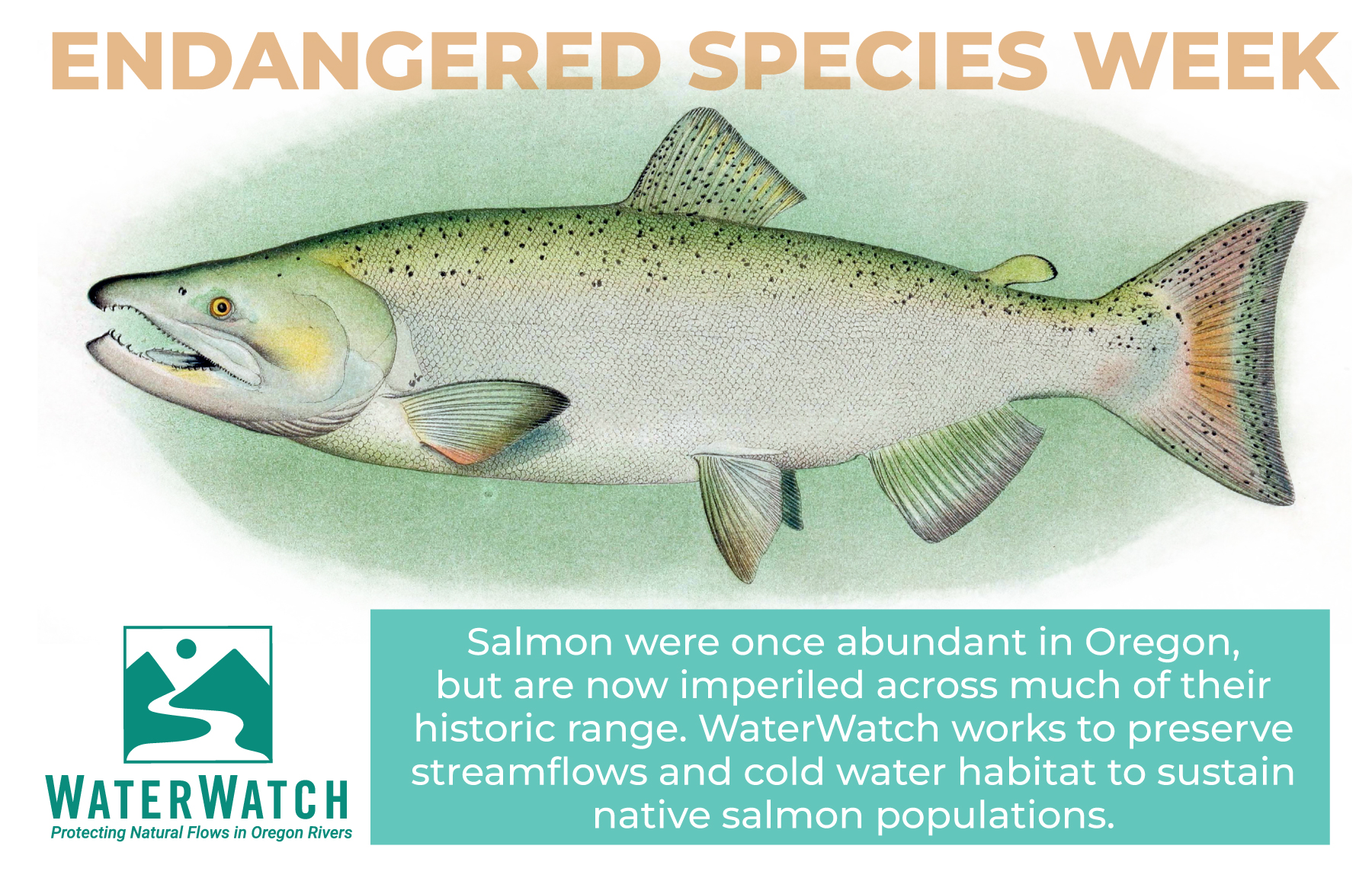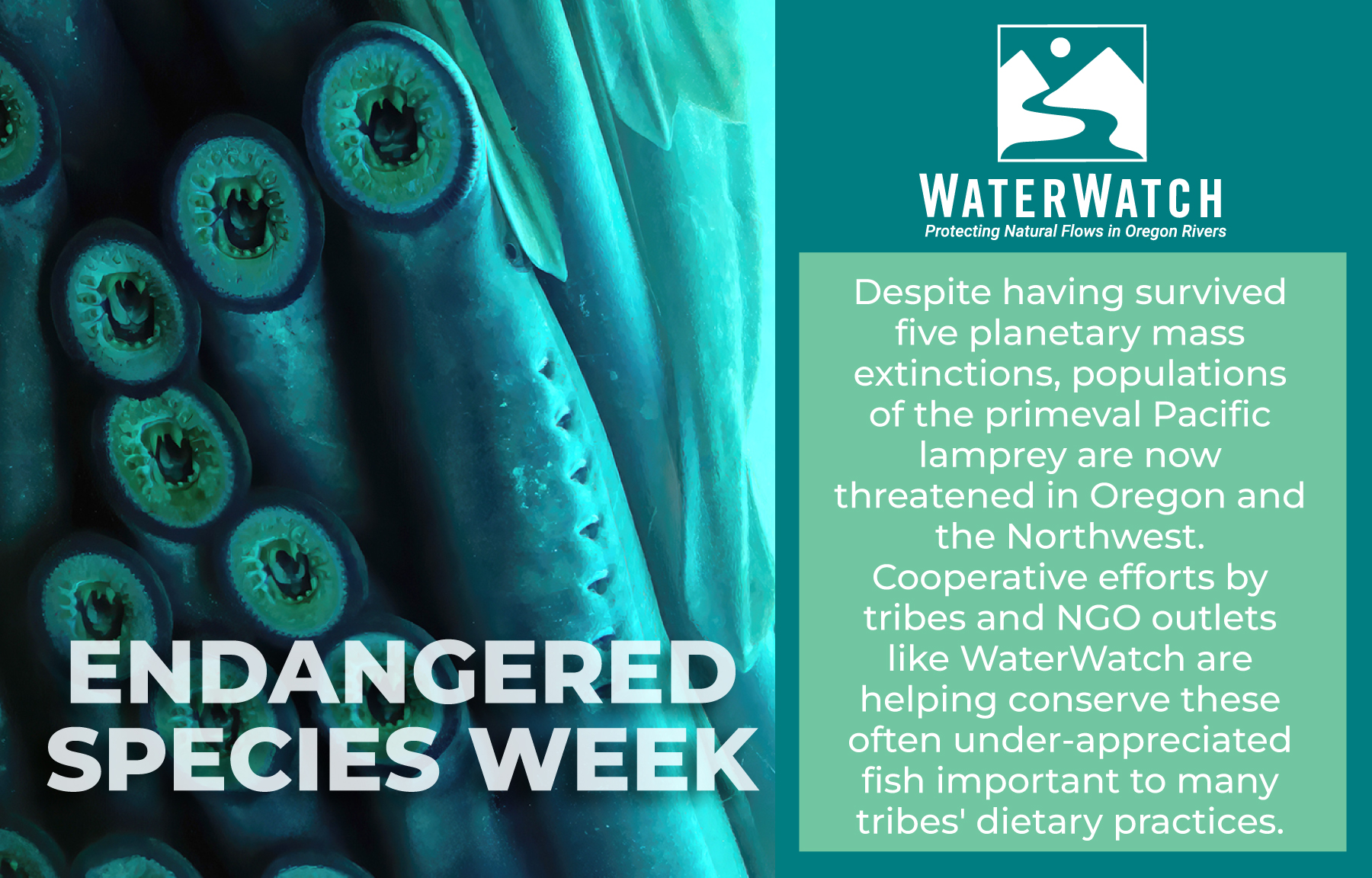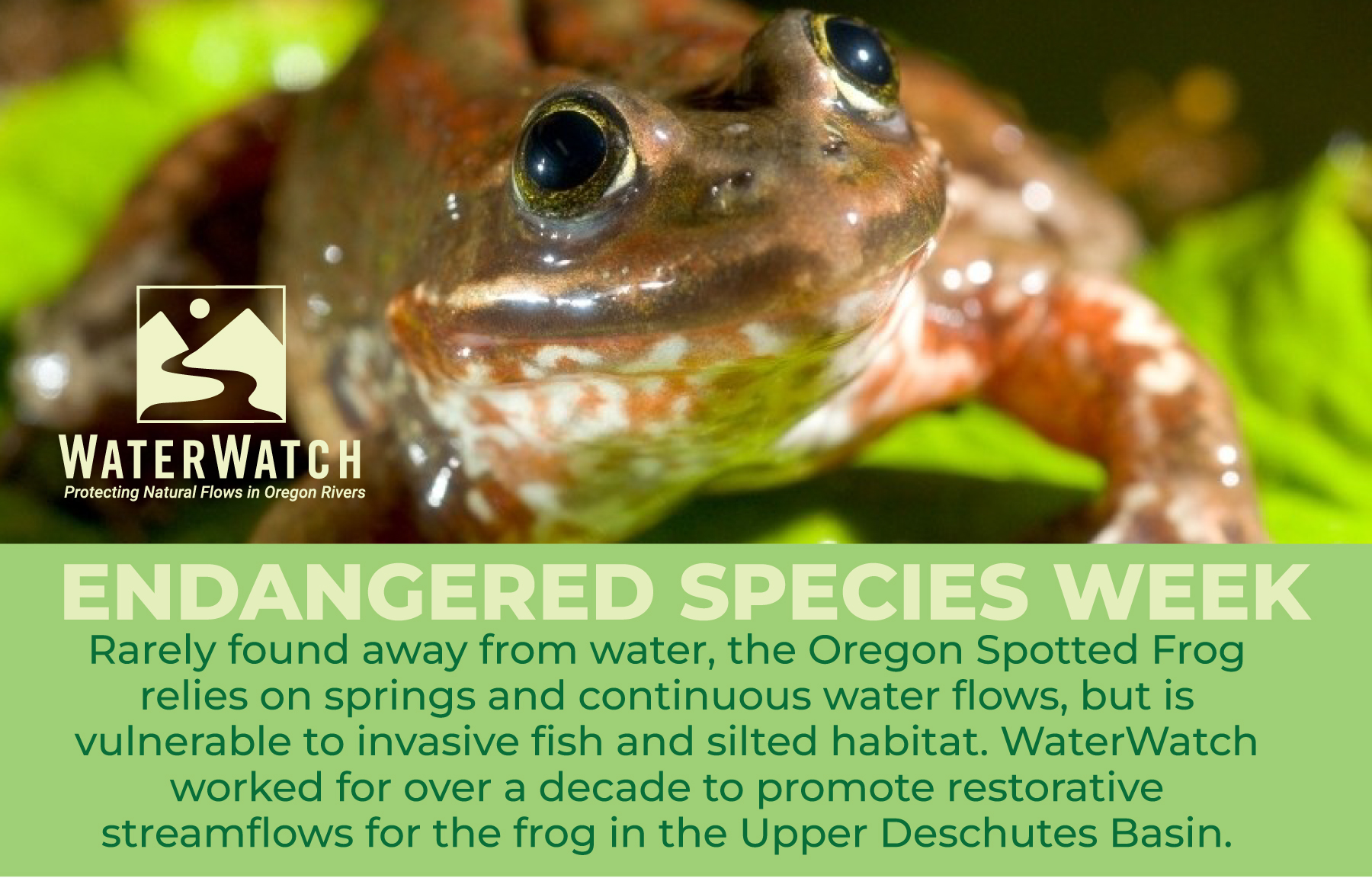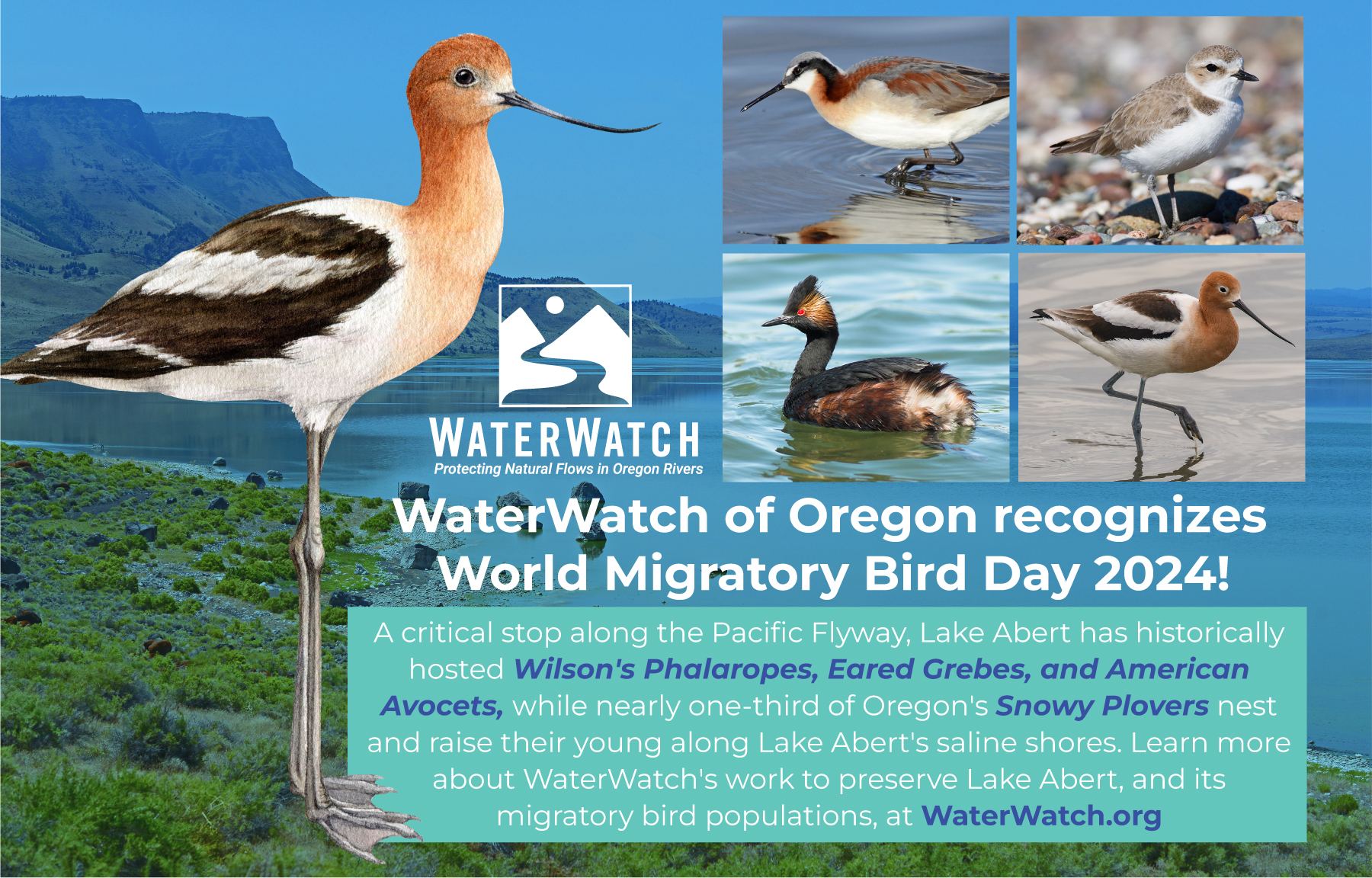May 17, 2024
All this week WaterWatch of Oregon has been spotlighting wildlife in the lead-up to today’s observance of Endangered Species Day, highlighting the importance and value of the landmark 1973 Endangered Species Act (ESA) and the plight of threatened aquatic species in Oregon.
Since the ESA was signed into law on Dec. 28, 1973, ninety-nine percent of all species listed have been saved from extinction, including the humpback whale, grizzly bear, and perhaps most famously, the bald eagle. Species like the marbled murrelet and northern spotted owl famously altered the course of conservation in Oregon and the Pacific Northwest, while near-threatened species like the snowy plover still struggle to survive in Oregon along the shores of saline Lake Abert, and on open areas of coastal shoreline in which vegetation is absent or sparse, like the Oregon Dunes.
At WaterWatch, we believe that preserving wildlife is a moral imperative and a responsibility to future generations, an exercise of best environmental practices, and vital to the health of Oregon’s rivers, streams, wetlands and waterways. The survival of endangered and threatened species — including the species featured this week and gathered here in graphics designed by WaterWatch’s Monet Hampson — informs our work every day.

A single pair of salmon produces thousands of fertile eggs, but the number of adult salmon that survive depends on fishing volumes and habitat. Salmon were once abundant in Oregon, but are now imperiled across much of their historic range. WaterWatch continues to work in support of streamflow preservation and cold water habitat to sustain native salmon populations.

Steelhead are rainbow or redband trout that migrate to the ocean during their first or second year, and return to their home stream up to three years later to spawn, but extractive water use and loss of habitat have led to severe declines in steelhead numbers. WaterWatch works to remove outdated and derelict dams to ensure steelhead can fully access Oregon’s remaining pristine cold water native fish habitat.

One of the more unusual threatened species in Oregon is the Pacific lamprey, a jawless fish that first evolved over 450 million years ago, making them older than even the dinosaurs! Despite having survived five planetary mass extinctions, populations of the Pacific lamprey remain threatened in Oregon. Cooperative efforts by tribes and NGOs like WaterWatch are helping conserve these under-appreciated, primeval fish.

The range of our state’s namesake Oregon spotted frog includes portions of the Cascades and the Klamath Basin in Deschutes, Lane, and Klamath counties, where springs and continuous water flows are imperative to its survival. WaterWatch worked for over a decade to promote restorative streamflows for the frog in the Upper Deschutes Basin, but invasive fish, bullfrogs, and silted habitat continue to take a toll.
Support WaterWatch’s work today preserving streamflows, cold water habitat, and Oregon’s magnificent aquatic wildlife.
While we’re at it, here’s our WaterWatch graphic from World Migratory Bird Day last week, featuring the Wilson’s Phalarope, Eared Grebe, American Avocet, and aforementioned Snowy Plover, all found on the shore of Oregon’s world-renowned Lake Abert.
Thanks again to WaterWatch’s Monet Hampson for designing these graphics!



